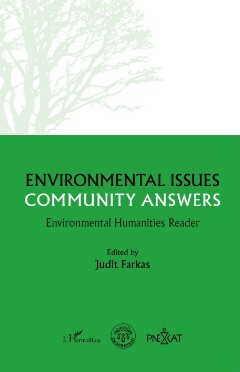Page 160 [160]
158 ANDRÁS TAKÁCS-SÁNTA
The downside to this approach is probably that it only really works in
communities with small populations. Above a certain size (one or two thousand
people at most) the members cant know each other personally, which entails the
weakening of trust among the members. Trust is indispensable for cooperation.
When there is a lack of trust, members of a collective tend to choose rivalry instead
of collaboration and the interest of an individual (or a smaller group) will override
the common interest. In parallel with the growth of the size of the group, the
feeling of coherence within the group will slacken, not independently of the factors
mentioned above. The group affected by the global environmental problems (that
is, the whole population of the Earth) can hardly have any feeling of coherence,
because we hardly feel any sense of belonging with people who are personally
unknown to us.
Moreover, the sense of cohesion is weakening even in a small group affected by
small-scale environmental problems. Owing in part to people’s growing mobility
and the increasing atomisation of society, there are fewer and fewer stable and
coherent human communities in the world. And even if the sense of coherence is
still intact, this approach only works if the group mainly uses the natural resources
of the territory they live on (but for the growing globalization of the economy,
this situation is ever rarer) and the costs of resource use (e.g. pollution and waste)
also weigh primarily on the group members, which is not generally the case.
In addition, the creation of rules can be aggravated, or prevented when mutual
communication and regulating activity demands too much time and energy from
the members of the community — and with the growth of group size, this is more
and more probable (Ostrom 2008; 2—9).
Education (changing attitudes and spreading information
on the possibilities of action)
Noticing the deterioration of the quality of the pasture, one of the herdsmen launched
an education campaign among his fellows. He demonstrated the problem of overgrazing
and warned them that if they did not introduce radical changes, they would all meet
a tragic fate. He not only outlined the problem, but also offered a possible solution: if
they kept only two cows per person, they would in all probability avoid the disaster. He
persuaded two of his fellows quickly, so now they joined forces to influence the others.
Though a few materialistically minded herdsmen could not be persuaded that two
heads of cattle were enough, they could make everyone understand that they should not
increase the number of their cows, which was enough for preventing the tragedy. The
material welfare of nearly all of them decreased considerably, yet the farmers and their
families lived happily ever after for generations.
Education consists basically of two parts: First, the presentation of the nature and
graveness of the ecological problem. People must be convinced that the problem
is grave and important and requires immediate action on their part (that is, one
Székely country put down several municipal laws which testify to ecological awareness. They
created binding rules in protection of collective goods — e.g. forests — and introduced bans (Imreh
1973; 1993. — See also Gellény — Margéczi 2016).

